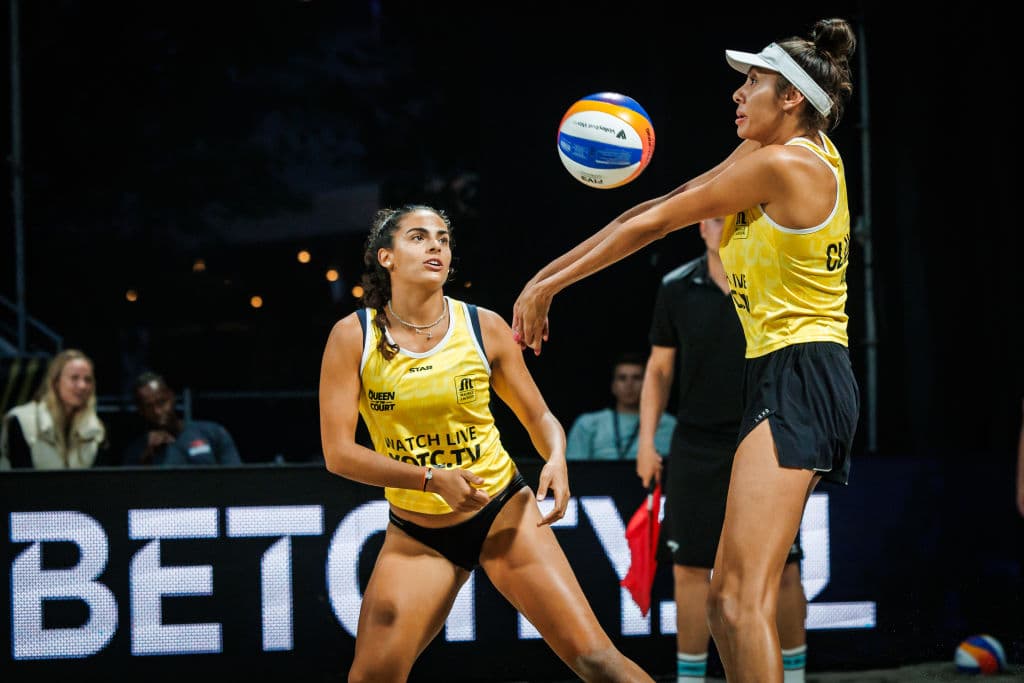Beach Volleyball 101: How to sound like an expert
SEN • November 13th, 2025 2:27 pm

The world’s best beach volleyball players are currently descending on Adelaide as they get ready for the 2025 FIVB Beach Volleyball World Championships.
The 10-day tournament will see 48 teams, both men’s and women’s, compete for the title of World Champions.
And with that in mind, we’ve written up a handy guide that will help make you an expert in no time.
Rules and objectives
In a three-set match, pairs must win two sets to claim victory and need to do so by at least two points.
Teams need to get 21 points in the first two sets to win it, but need to do so by two points.
That means if both teams are tied at 20-20, the set continues until someone wins by two points.
And if the match goes to a third and final set, then it goes to 15 points. But like the first two, it needs to be won by two points.
A coin toss at the start of the match, with the winners of the toss determining whether they serve/receive or pick which side they’ll start from. The loser will then choose the other option.
The serving team will start the match and retain the serve until they lose their first point. Whoever wins the point will either win the ability to serve or retain it.
The pair is only allowed to make at most three hits before they have to send it across the net. Players cannot make consecutive touches of the ball (unless during or after blocking the team’s first contact at the net).
How does it differ from indoor volleyball
Beach Volleyball is much quicker than indoor volleyball, with matches in the sand played to the best-of-three sets, while indoor matches are best-of-five.
You also need fewer points to be able to win a set. The first two sets require a pair to win 21 points, while you would need 25 points to achieve the same.
And in the final set (if required), it will only go to 15 points.
With only two players on each team (compared to six in indoor), it means that the court is slightly shorter, too.
With only two players on each team (compared to six in indoor), it means that the court is slightly shorter, too.
A beach volleyball court is 16 metres long and eight metres wide, which is two metres shorter in length and one metre shorter in width.
But both have the same net height, with it being 2.43 metres high for the men and 2.24 metres for the women.
How can a point be won
A point can be won in the following ways.
- Landing the ball in your opposition’s court, who can’t return it
- The ball is hit out of bounds
- A player double-faults on their serve
- An opposing player gets given a red card
- The ball is hit out of bounds
- A player double-faults on their serve
- An opposing player gets given a red card
Terminology
Ace - A serve that has landed in and has not been returned
Block - Preventing the ball from going into your court by jumping up to the net to stop the ball
Dig - Avoid losing a point by stopping the ball from going out or touching the ground
Kill - A hit from an attacking player that earns a point
Set - Preparing a ball to go. Usually refers to the second play before the ball goes over the net
Slang terms
Like any sport, beach volleyball has some unique terminology.
And some of Australia's best beach volleyballers would give their best crack at explaining what terms like husband/wife, chicken wing and sizzling the pits mean.
The 2025 FIVB Beach Volleyball World Championships will get underway on November 14 at The Drive, which is right next to the River Torrens in the centre of Adelaide.

